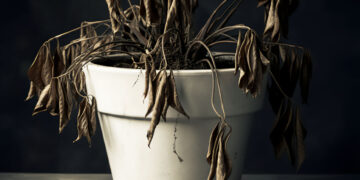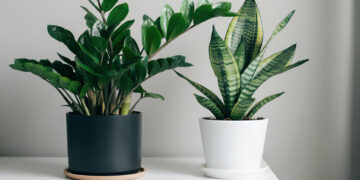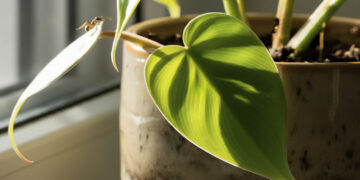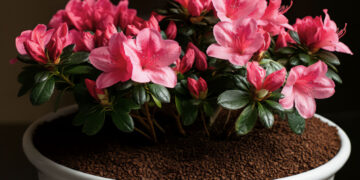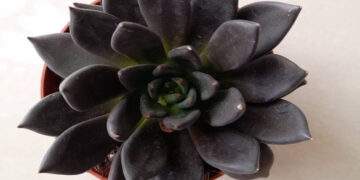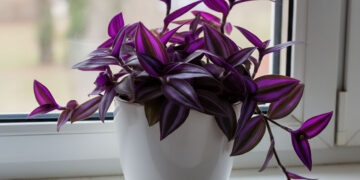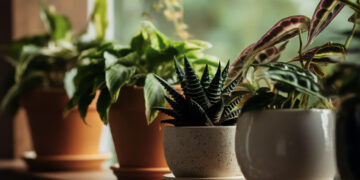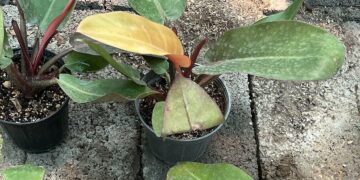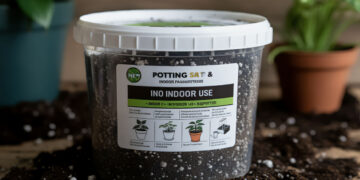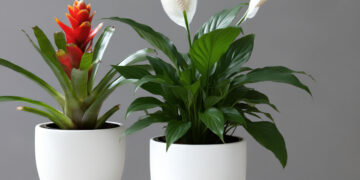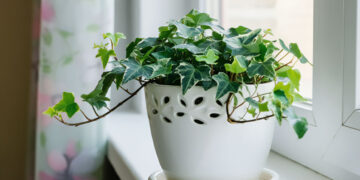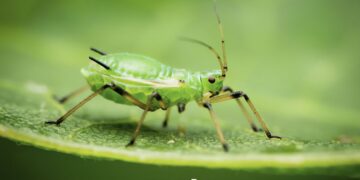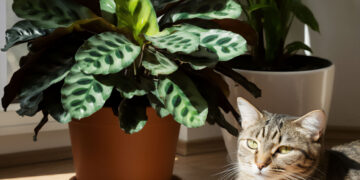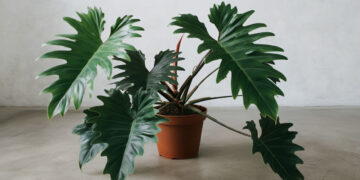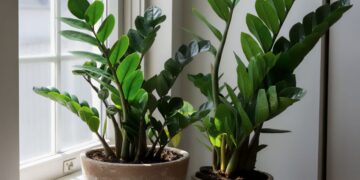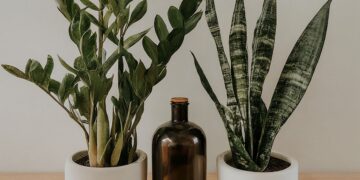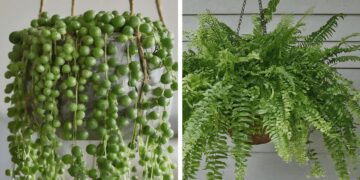Most blooming houseplants aren’t very easy to care for, so it’s better to know these tips before buying and deciding to keep them. However, I’ve introduced six of these plants that are perfectly suitable for people who are busy.
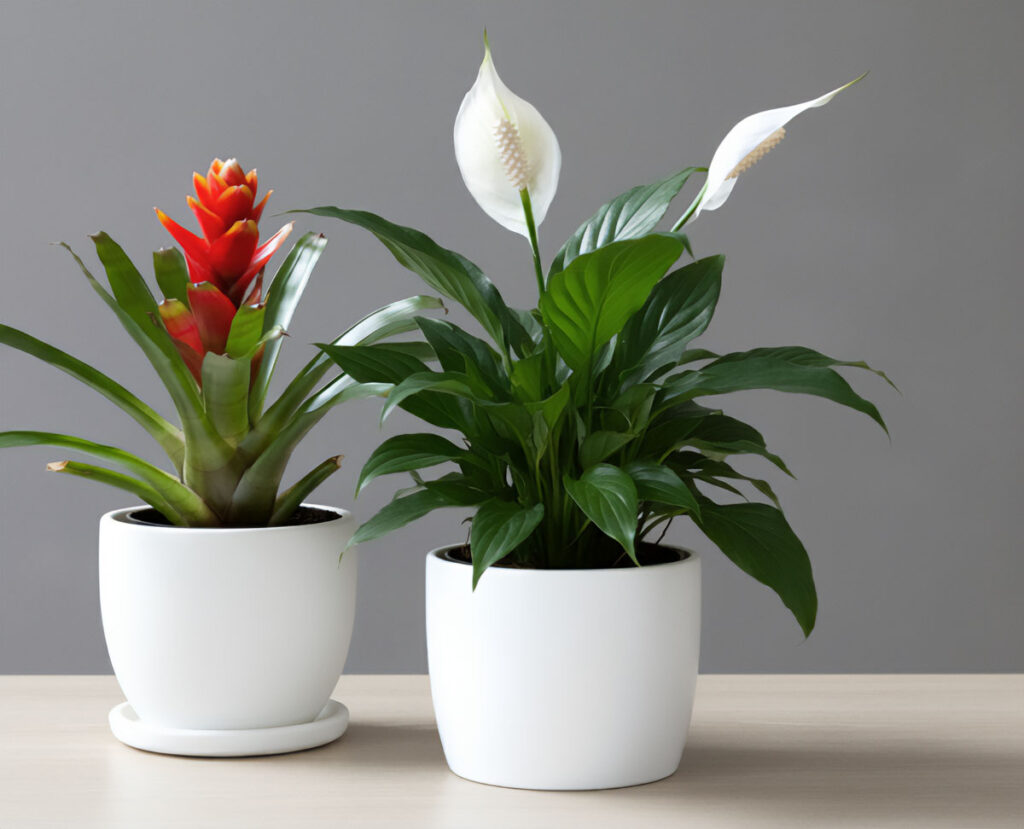
What are the needs of most blooming houseplants?
– Most blooming houseplants need bright, indirect light. This means that if your space has very low light, they might not be the best option. However, you can use grow lights to make up for the lack of natural light.
– Blooming houseplants usually need regular watering, which means they require more attention, and their soil should be moist but not wet.
– Make sure the bottom of your houseplant pot has a hole for draining extra water, and place a saucer under it.
– Most blooming houseplants grow in a temperature range of 18 to 24°C or 65 to 75°F. Do not put your blooming houseplant in a place where the wind blows, and the air is cold and uncomfortable. For example, a room with seams and the wind blows through those seams, or a place where the window is open and a cold wind blows in.
– Some houseplants that flowers like to have more humidity. You can spray their leaves with water or put a humidifier in the room.
– Well-drained soil is essential for blooming houseplants. The best soil for houseplants should easily pass water through itself so that the roots do not dry and the root rot doesn’t happen at all. It can also maintain some moisture so that the blooming houseplant roots are always in excellent and moist condition.
– Be careful; there is a unique potting mix for each different blooming houseplant. For example, orchids or African violets have their own mixture that provides the best conditions for the growth of these houseplants.
– Soil rich in nutrients is like complete food full of vitamins for a blooming houseplant, which needs more nutrients for beautiful flowering and is full of flowers. So don’t forget to use houseplant fertilize for blooming houseplants.
– Pruning is like a barbershop for a houseplant. By pruning the dried flowers, we encourage them to produce new and fresh flowers. It can help the blooming houseplant have a beautiful and healthy shape, remove damaged or dead parts, and increase flowering life.
– Good air circulation is like a calm and pleasant wind for the blooming houseplant. This cool wind prevents fungal diseases that can disrupt the flowering of the houseplant.
– Flowering houseplants are often seasonal. Like summer and spring when there are many flowers. So, it is better to buy a houseplant when it has flowers to make sure that you have a healthy and fresh blooming houseplant.
Tip: Not all plants flower quickly, especially indoors. It means that some houseplants may take years to flower. So, first, enjoy the beauty of their leaves and make flowers a gift and luck.
If you’re interested in keeping blooming houseplants but don’t have enough time for them, these six could be great options for you.
1. Peace Lily (Spathiphyllum)
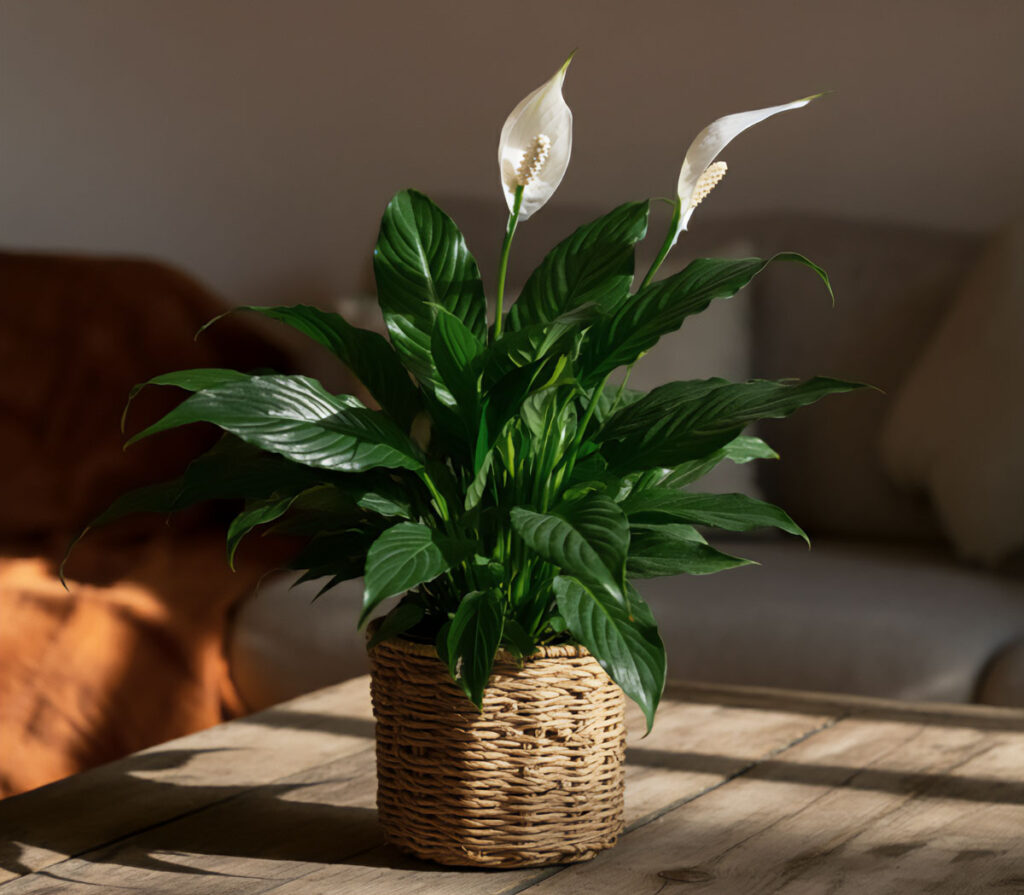
The peace lily is a tropical houseplant with white flowers. Its elegance, with glossy dark green leaves on long, slender stems, can catch everyone’s eye. It is one of the best air purifier houseplants and it can grow up to 3 feet tall and wide and is suitable for indoor spaces with limited sunlight.
care tips
It is an easy-to-care and hardy houseplant to low light and even ignore. Keep it at a temperature of 60 to 85°F and water it only when the soil is dry, or it is a little droopy houseplant. Don’t forget, if you want to produce more flowers, put them in medium light, and if you prefer more leaves, place them in low light.
Flowering
It usually takes about eight weeks to bloom in spring and summer. If you take good care of it, it can flower several times in one year, and its flowers can last from a few weeks to a few months.
Toxic to Pets and Kids: Yes
2. Kalanchoe (Kalanchoe blossfeldiana)
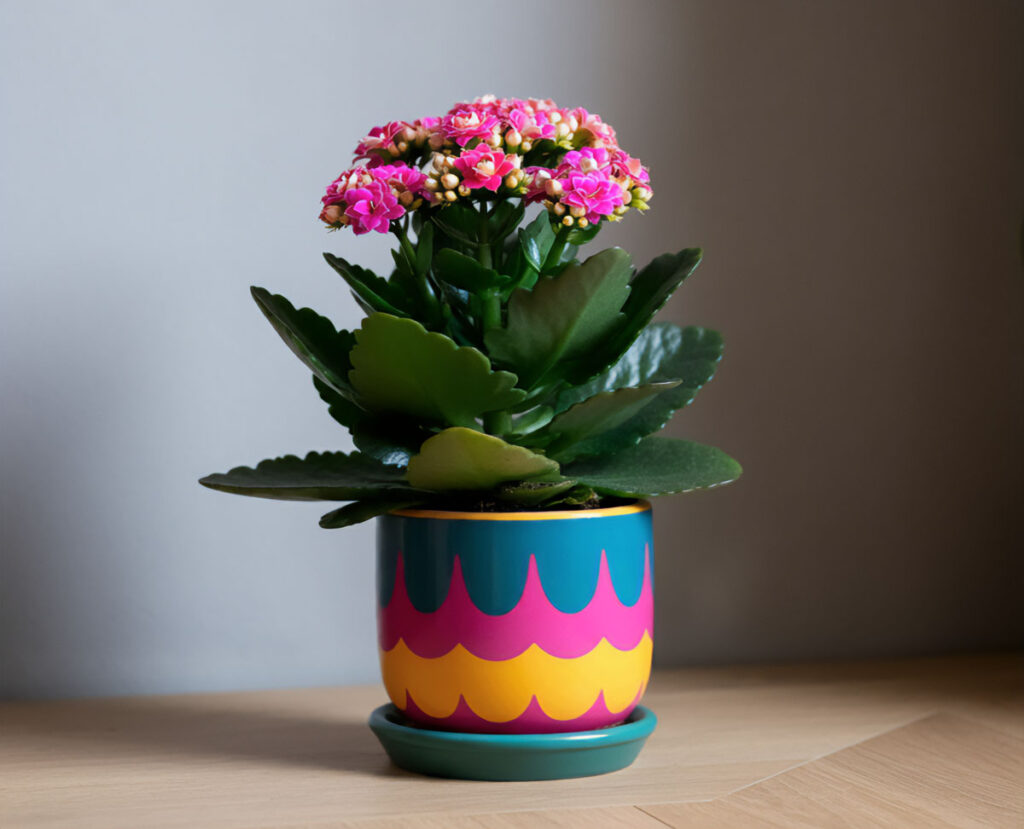
Kalanchoe is a succulent with thick and fleshy leaves that store water.
Small red, pink, orange and yellow clusters can make your house fascinating.
It usually grows between 12 and 18 inches tall and wide.
Care tips
This blooming houseplant needs bright and indirect light and prefers well-drained soil. It is an easy-care houseplant that deals with droughts. In fact, kalanchoe needs low watering and can survive periods of neglect, and its small size makes it suitable for small spaces. I put it on a window facing south or west.
Flowering
It blooms naturally in late winter to early spring with the increase of daylight, and its flowers can last for several weeks to several months. It may be strange, but I saw that it can produce flowers indoors again in autumn.
Toxic to Pets and Kids: Yes
3. Bromeliad (Bromeliaceae)
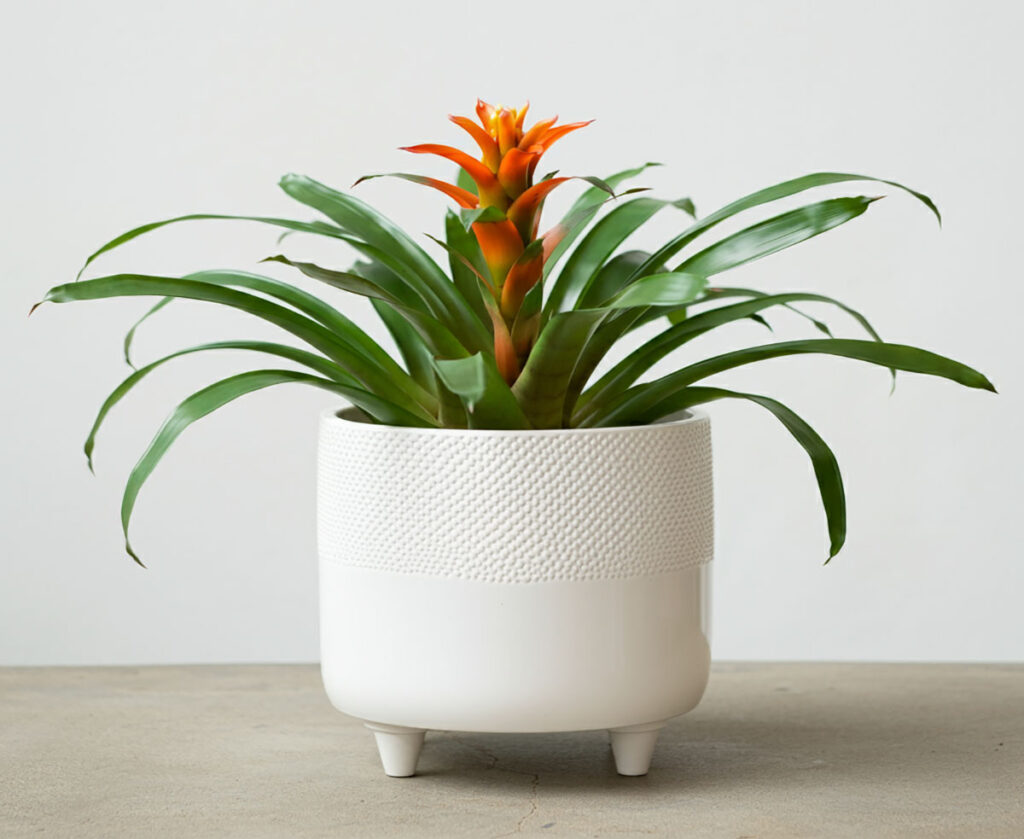
This blooming houseplant, with its colorful leaves and rose-like flowers, gives your home a tropical feel and provides a safe space for your pets. The exciting thing about it is that it can absorb water through its cup and does not need soil.
If you follow houseplant care issues, it can grow 2 to 3 feet tall and wide at home.
Care tips
This blooming houseplant grows in different indoor environments. I suggest it to those who have no experience in growing houseplants and are usually busy. Because it is low-maintenance, just place it somewhere with bright and indirect light and minimal watering.
Flowering
Most bromeliads bloom only once in their lifetime, usually during the warmer months, which can last for a couple of months.
Toxic to Pets and Kids: No
4. Christmas Cactus (Schlumbergera)
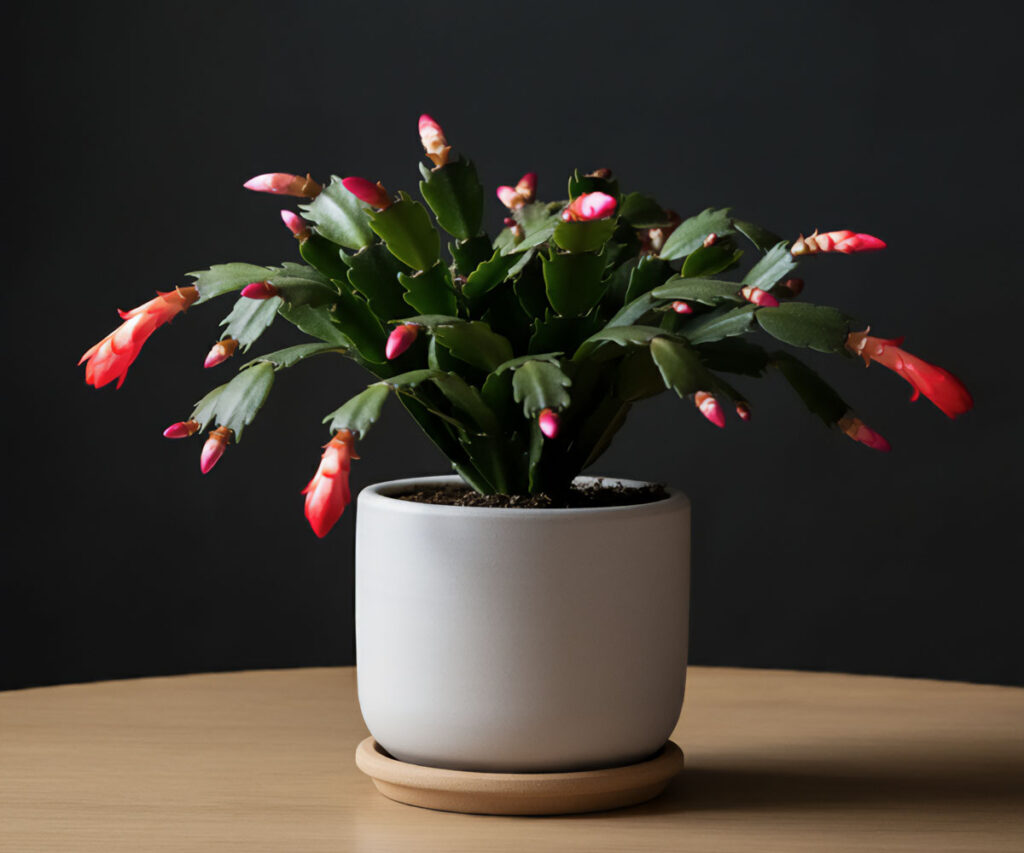
I love its smooth, segmented leaves and its beautiful, colorful flowers. It can grow up to 1 to 2 feet tall and wide.
Care tips
Can easily grow in different indoor conditions and is very resistant and easy to care for.
If you want your blooming houseplant to grow well and flower, place it in bright and indirect light and don’t let direct sunlight reach it. This indoor plant can flower even in less-than-ideal light. In the flowering season, it needs more water, but in other seasons, water when the soil is completely dry because overwatering damages its roots.
It’s good idea to keep this cactus at a temperature of 70 to 80°F. Still, in the fall, a colder temperature, for example, around 55°F, can help it bloom.
Flowering
It usually blooms once a year during the holiday season, i.e., autumn and winter, when the temperature is cool and the days are short. Of course, if you take good care of it, it can bloom even more, and you can enjoy its beauty for several weeks.
Toxic to Pets and Kids: No
5. Anthurium (Anthurium andraeanum)
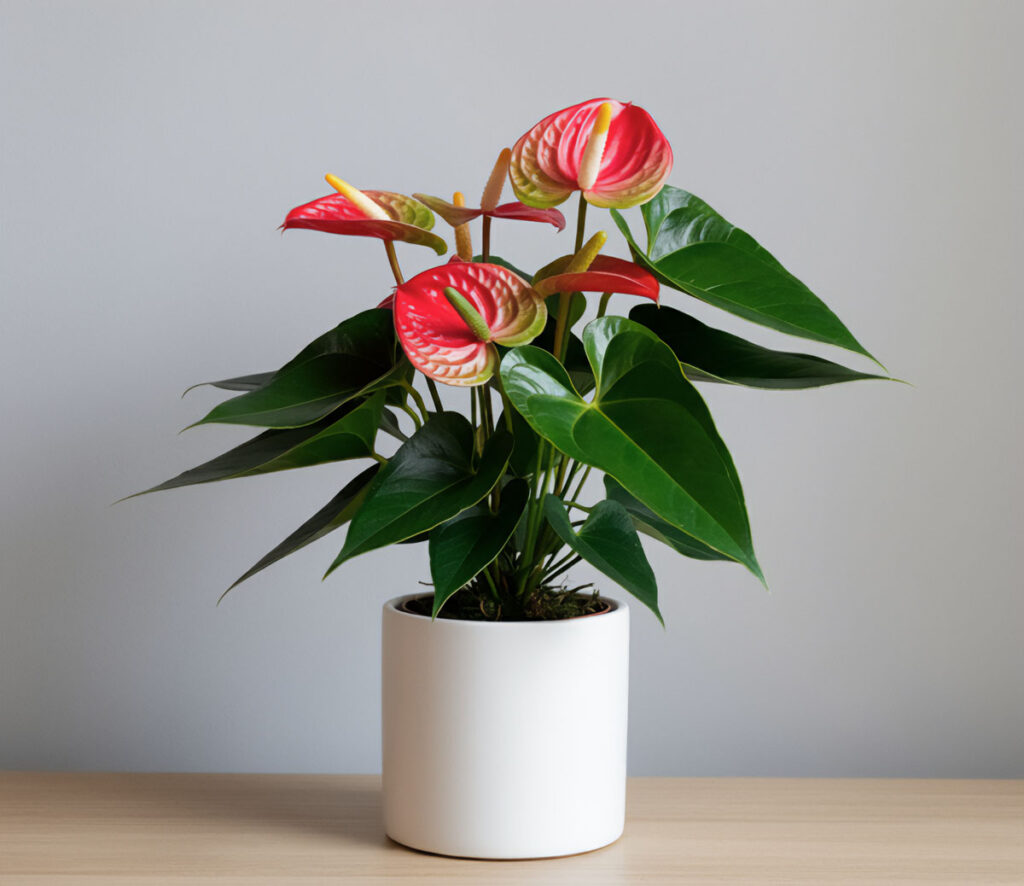
Anthurium is a modern houseplant with green heart-shaped leaves and prominent wax-shaped flowers that are usually seen in red, pink, lavender or white colors. With proper care, anthuriums can reach 3 feet in height and 2 feet in width and make the house attractive.
Care tips
how to care for this plant is not difficult at all, and it usually solves its problems.
It loves moisture and bright, indirect light, and its soil should always be moist, but be careful not to be wet. I water it regularly. However, watering becomes much less in autumn and winter. Do not allow the temperature of the house to be lower than 65°F and higher than 80°F.
Flowering
Suppose you don’t let your houseplant suffer from diseases. In that case, the flowers usually appear every six weeks throughout the year and last for a few weeks to a few months.
Toxic to Pets and Kids: Yes
6. Crown of Thorns (Euphorbia milii)
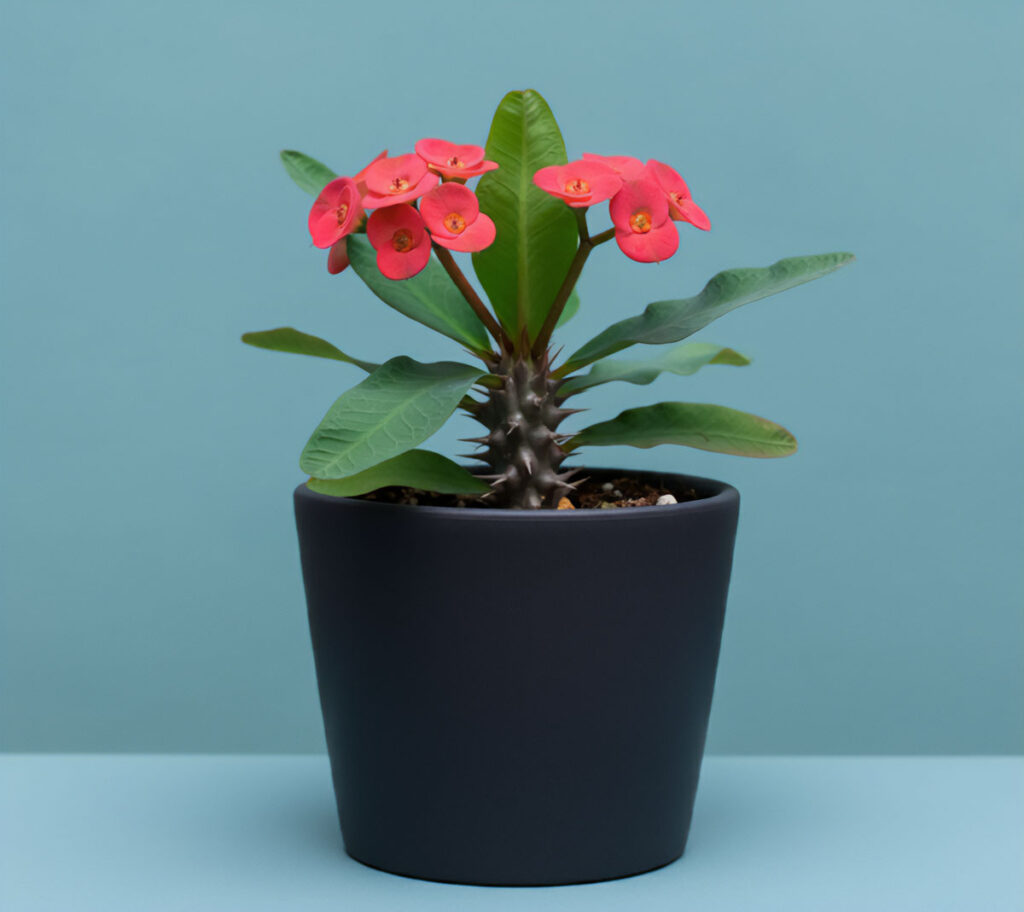
This resistant and succulent houseplant has spiky, thick and gray-brown stems. Moreover, its flowers are small and can be seen in red, pink or yellow colors. It is better to know that this blooming houseplant grows up to three feet indoors.
Care tips
it grows and flowers better in strong light. It is stubborn to lack water, and it doesn’t need water a lot.l That makes it common, and you may see it in every house. I try to keep the temperature constant between 65 and 75°F and use well-draining soil.
I think that the best place is a window facing south or west.
Flowering
This houseplant blooms frequently during the year, and the flowers last for a few weeks.
Toxic to Pets and Kids: Yes
source: https://extension.umd.edu/resource/selecting-indoor-plants/
I hope my explanation is full. If you have any questions, be sure to ask.
